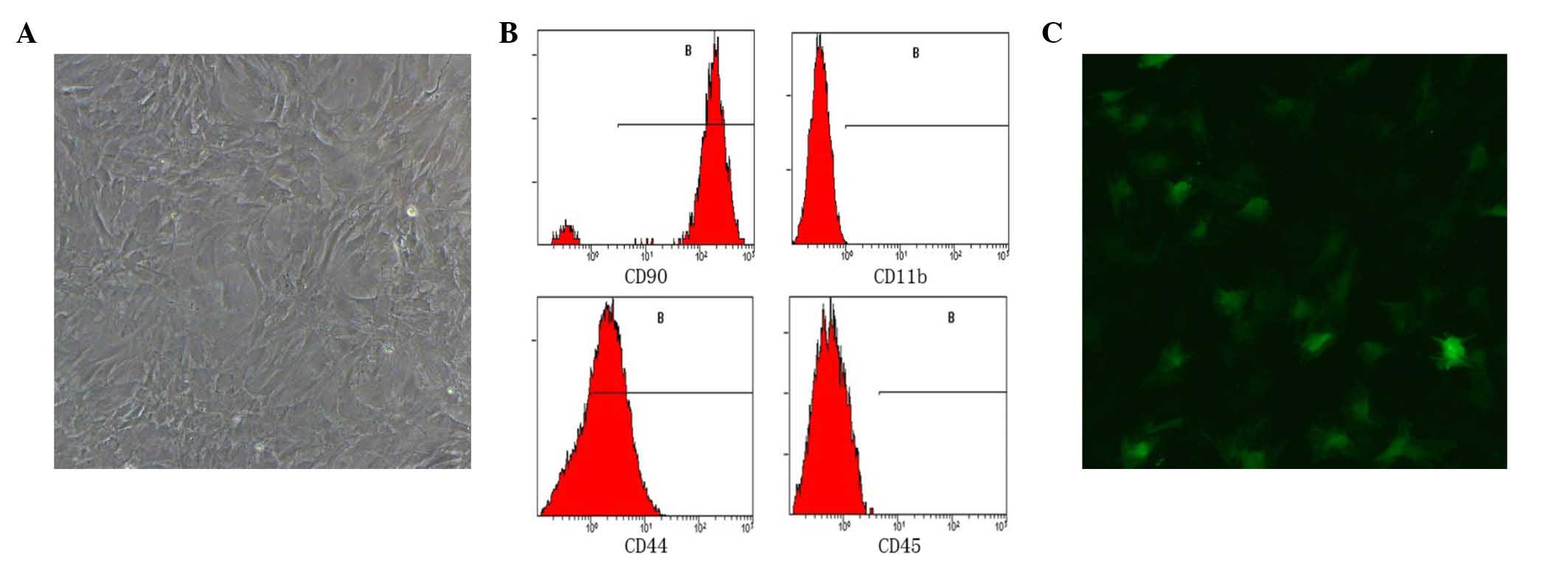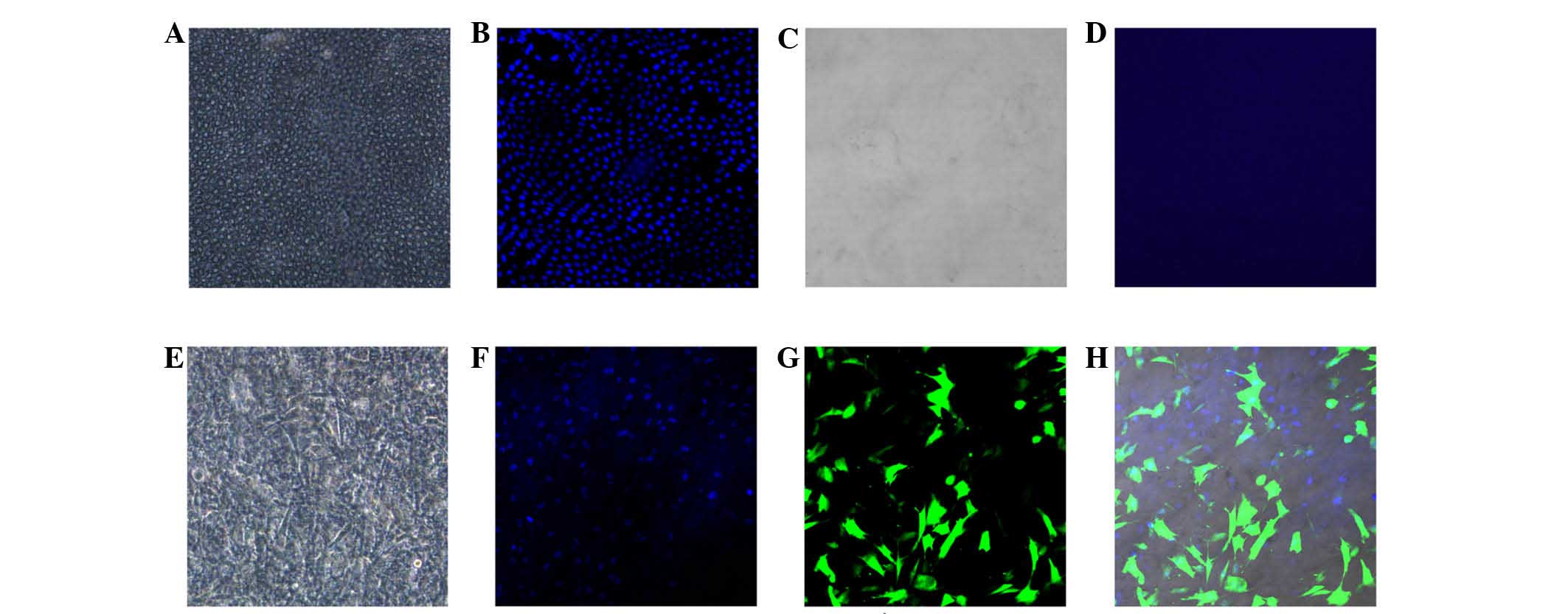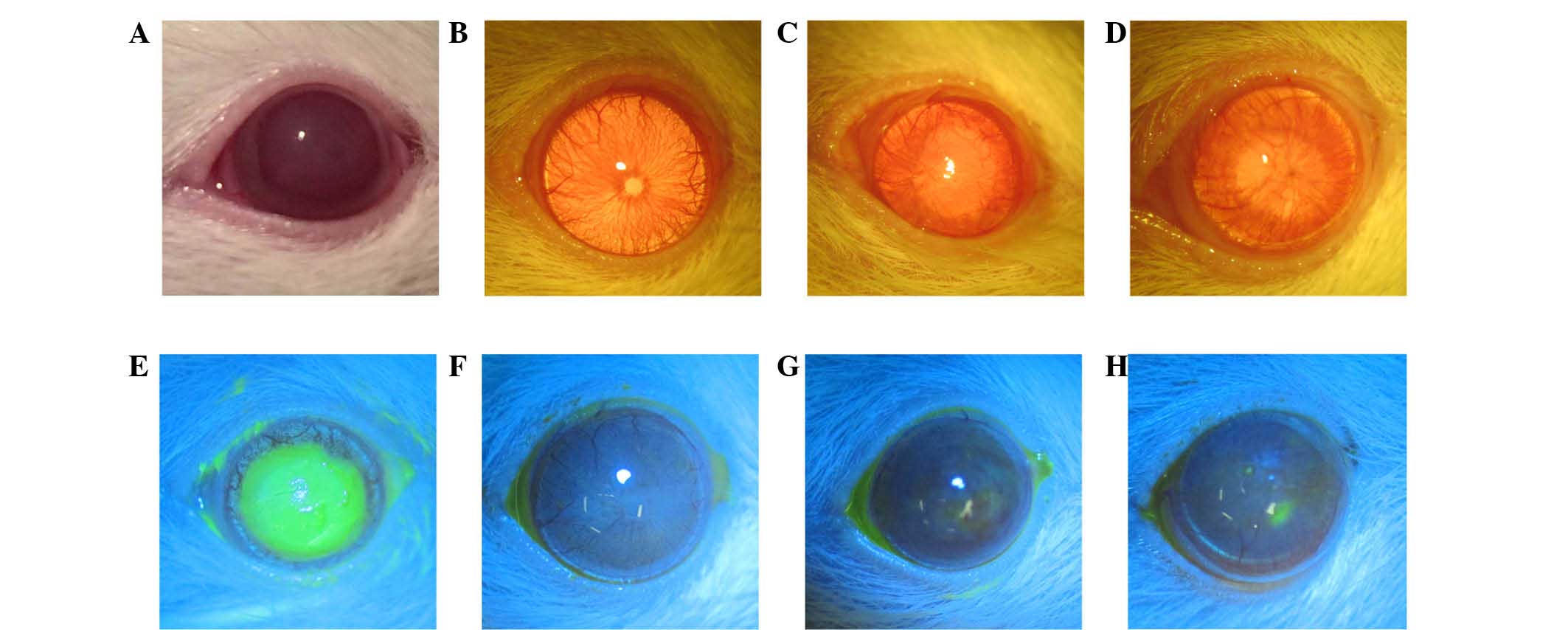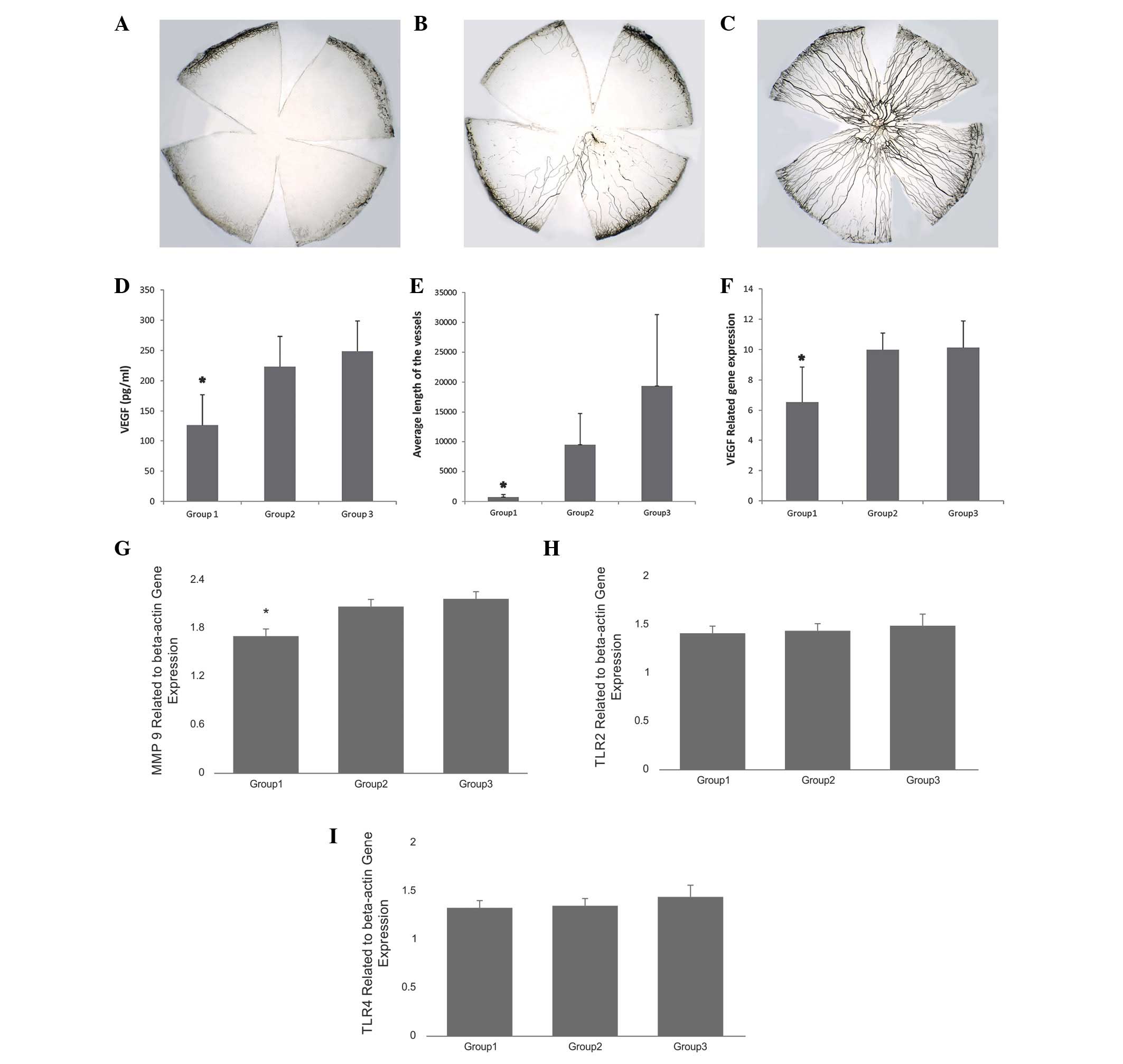|
1
|
Robaei D and Watson S: Corneal blindness:
A global problem. Clin Experiment Ophthalmol. 42:213–214. 2014.
View Article : Google Scholar : PubMed/NCBI
|
|
2
|
Whitcher JP, Srinivasan M and Upadhyay MP:
Corneal blindness: A global perspective. Bull World Health Organ.
79:214–221. 2001.PubMed/NCBI
|
|
3
|
Alvord LA, Hall WJ, Keyes LD, Morgan CF
and Winterton LC: Corneal oxygen distribution with contact lens
wear. Cornea. 26:654–664. 2007. View Article : Google Scholar : PubMed/NCBI
|
|
4
|
Martins TG, Costa AL, Alves MR and
Gonçalves MM: Contact lens use with intraestromal hemorrhage
secondary to corneal neovascularization. Einstein (Sao Paulo).
10:524–525. 2012.In English, Portuguese. View Article : Google Scholar
|
|
5
|
Cursiefen C, Küchle M and Naumann GO:
Angiogenesis in corneal diseases: Histopathologic evaluation of 254
human corneal buttons with neovascularization. Cornea. 17:611–613.
1998. View Article : Google Scholar : PubMed/NCBI
|
|
6
|
Giacomini C, Ferrari G, Bignami F and Rama
P: Alkali burn versus suture-induced corneal neovascularization in
C57BL/6 mice: An overview of two common animal models of corneal
neovascularization. Exp Eye Res. 121:1–4. 2014. View Article : Google Scholar : PubMed/NCBI
|
|
7
|
Hsu CC, Chang HM, Lin TC, Hung KH, Chien
KH, Chen SY, Chen SN and Chen YT: Corneal neovascularization and
contemporary antiangiogenic therapeutics. J Chin Med Assoc.
78:323–330. 2015. View Article : Google Scholar : PubMed/NCBI
|
|
8
|
Kenyon KR and Tseng SC: Limbal autograft
transplantation for ocular surface disorders. O. phthalmology.
96:709–722; discussion 722–723. 1989. View Article : Google Scholar
|
|
9
|
Kolli S, Ahmad S, Mudhar HS, Meeny A, Lako
M and Figueiredo FC: Successful application of ex vivo expanded
human autologous oral mucosal epithelium for the treatment of total
bilateral limbal stem cell deficiency. Stem Cells. 32:2135–2146.
2014. View Article : Google Scholar : PubMed/NCBI
|
|
10
|
Lee JY, Jeong HJ, Kim MK and Wee WR: Bone
marrow-derived mesenchymal stem cells affect immunologic profiling
of interleukin-17-secreting cells in a chemical burn mouse model.
Korean J Ophthalmol. 28:246–256. 2014. View Article : Google Scholar : PubMed/NCBI
|
|
11
|
Kwitko S, Marinho D, Barcaro S, Bocaccio
F, Rymer S, Fernandes S and Neumann J: Allograft conjunctival
transplantation for bilateral ocular surface disorders.
Ophthalmology. 102:1020–1025. 1995. View Article : Google Scholar : PubMed/NCBI
|
|
12
|
Chan AA, Hertsenberg AJ, Funderburgh ML,
Mann MM, Du Y, Davoli KA, Mich-Basso JD, Yang L and Funderburgh JL:
Differentiation of human embryonic stem cells into cells with
corneal keratocyte phenotype. PLoS One. 8:e568312013. View Article : Google Scholar : PubMed/NCBI
|
|
13
|
Arnalich-Montiel F, Pastor S,
Blazquez-Martinez A, Fernandez-Delgado J, Nistal M, Alio JL and De
Miguel MP: Adipose-derived stem cells are a source for cell therapy
of the corneal stroma. Stem Cells. 26:570–579. 2008. View Article : Google Scholar
|
|
14
|
Cejkova J, Trosan P, Cejka C, Lencova A,
Zajicova A, Javorkova E, Kubinova S, Sykova E and Holan V:
Suppression of alkali-induced oxidative injury in the cornea by
mesenchymal stem cells growing on nanofiber scaffolds and
transferred onto the damaged corneal surface. Exp Eye Res.
116:312–323. 2013. View Article : Google Scholar : PubMed/NCBI
|
|
15
|
Gu S, Xing C, Han J, Tso MO and Hong J:
Differentiation of rabbit bone marrow mesenchymal stem cells into
corneal epithelial cells in vivo and ex vivo. Mol Vis. 15:99–107.
2009.PubMed/NCBI
|
|
16
|
Jiang TS, Cai L, Ji WY, Hui YN, Wang YS,
Hu D and Zhu J: Reconstruction of the corneal epithelium with
induced marrow mesenchymal stem cells in rats. Mol Vis.
16:1304–1316. 2010.PubMed/NCBI
|
|
17
|
Bianco P, Riminucci M, Gronthos S and
Robey PG: Bone marrow stromal stem cells: Nature, biology, and
potential applications. Stem Cells. 19:180–192. 2001. View Article : Google Scholar : PubMed/NCBI
|
|
18
|
Herzog EL, Chai L and Krause DS:
Plasticity of marrow-derived stem cells. Blood. 102:3483–3493.
2003. View Article : Google Scholar : PubMed/NCBI
|
|
19
|
Tse WT, Pendleton JD, Beyer WM, Egalka MC
and Guinan EC: Suppression of allogeneic T-cell proliferation by
human marrow stromal cells: Implications in transplantation.
Transplantation. 75:389–397. 2003. View Article : Google Scholar : PubMed/NCBI
|
|
20
|
Ribeiro A, Laranjeira P, Mendes S, Velada
I, Leite C, Andrade P, Santos F, Henriques A, Grãos M, Cardoso CM,
et al: Mesenchymal stem cells from umbilical cord matrix, adipose
tissue and bone marrow exhibit different capability to suppress
peripheral blood B, natural killer and T cells. Stem Cell Res Ther.
4:1252013. View
Article : Google Scholar :
|
|
21
|
Ma Y, Xu Y, Xiao Z, Yang W, Zhang C, Song
E, Du Y and Li L: Reconstruction of chemically burned rat corneal
surface by bone marrow-derived human mesenchymal stem cells. Stem
Cells. 24:315–321. 2006. View Article : Google Scholar
|
|
22
|
Guo T, Wang W, Zhang J, Chen X, Li BZ and
Li LS: Experimental study on repairing damage of corneal surface by
mesenchymal stem cells transplantation. Zhonghua Yan Ke Za Zhi.
42:246–250. 2006.In Chinese. PubMed/NCBI
|
|
23
|
Ye J, Yao K and Kim JC: Mesenchymal stem
cell transplantation in a rabbit corneal alkali burn model:
Engraftment and involvement in wound healing. Eye (Lond).
20:482–490. 2006. View Article : Google Scholar
|
|
24
|
Liu XW and Zhao JL: Transplantation of
autologous bone marrow mesenchymal stem cells for the treatment of
corneal endothelium damages in rabbits. Zhonghua Yan Ke Za Zhi.
43:540–545. 2007.In Chinese. PubMed/NCBI
|
|
25
|
Oh JY, Kim MK, Shin MS, Lee HJ, Ko JH, Wee
WR and Lee JH: The anti-inflammatory and anti-angiogenic role of
mesenchymal stem cells in corneal wound healing following chemical
injury. Stem Cells. 26:1047–1055. 2008. View Article : Google Scholar : PubMed/NCBI
|
|
26
|
Reinshagen H, Auw-Haedrich C, Sorg RV,
Boehringer D, Eberwein P, Schwartzkopff J, Sundmacher R and
Reinhard T: Corneal surface reconstruction using adult mesenchymal
stem cells in experimental limbal stem cell deficiency in rabbits.
Acta Ophthalmol. 89:741–748. 2011. View Article : Google Scholar
|
|
27
|
Liu H, Zhang J, Liu CY, Hayashi Y and Kao
WW: Bone marrow mesenchymal stem cells can differentiate and assume
corneal keratocyte phenotype. J Cell Mol Med. 16:1114–1124. 2012.
View Article : Google Scholar
|
|
28
|
Yao L, Li ZR, Su WR, Li YP, Lin ML, Zhang
WX, Liu Y, Wan Q and Liang D: Role of mesenchymal stem cells on
cornea wound healing induced by acute alkali burn. PLoS One.
7:e308422012. View Article : Google Scholar : PubMed/NCBI
|
|
29
|
Pinarli FA, Okten G, Beden U, Fışgın T,
Kefeli M, Kara N, Duru F and Tomak L: Keratinocyte growth factor-2
and autologous serum potentiate the regenerative effect of
mesenchymal stem cells in cornea damage in rats. Int J Ophthalmol.
7:211–219. 2014.PubMed/NCBI
|
|
30
|
Rohaina CM, Then KY, Ng AM, Wan Abdul
Halim WH, Zahidin AZ, Saim A and Idrus RB: Reconstruction of limbal
stem cell deficient corneal surface with induced human bone marrow
mesenchymal stem cells on amniotic membrane. Transl Res.
163:200–210. 2014. View Article : Google Scholar
|
|
31
|
Du Y, Roh DS, Funderburgh ML, Mann MM,
Marra KG, Rubin JP, Li X and Funderburgh JL: Adipose-derived stem
cells differentiate to keratocytes in vitro. Mol Vis. 16:2680–2689.
2010.PubMed/NCBI
|
|
32
|
Martinez-Conesa EM, Espel E, Reina M and
Casaroli-Marano RP: Characterization of ocular surface epithelial
and progenitor cell markers in human adipose stromal cells derived
from lipoaspirates. Invest Ophthalmol Vis Sci. 53:513–520. 2012.
View Article : Google Scholar :
|
|
33
|
Monteiro BG, Serafim RC, Melo GB, Silva
MC, Lizier NF, Maranduba CM, Smith RL, Kerkis A, Cerruti H, Gomes
JA and Kerkis I: Human immature dental pulp stem cells share key
characteristic features with limbal stem cells. Cell Prolif.
42:587–594. 2009. View Article : Google Scholar : PubMed/NCBI
|
|
34
|
Nieto-Miguel T, Galindo S, Reinoso R,
Corell A, Martino M, Pérez-Simón JA and Calonge M: In vitro
simulation of corneal epithelium microenvironment induces a corneal
epithelial-like cell phenotype from human adipose tissue
mesenchymal stem cells. Curr Eye Res. 38:933–944. 2013. View Article : Google Scholar : PubMed/NCBI
|
|
35
|
Zeppieri M, Salvetat ML, Beltrami AP,
Cesselli D, Bergamin N, Russo R, Cavaliere F, Varano GP, Alcalde I,
Merayo J, et al: Human adipose-derived stem cells for the treatment
of chemically burned rat cornea: Preliminary results. Curr Eye Res.
38:451–463. 2013. View Article : Google Scholar : PubMed/NCBI
|
|
36
|
Soleimani M and Nadri S: A protocol for
isolation and culture of mesenchymal stem cells from mouse bone
marrow. Nat Protoc. 4:102–106. 2009. View Article : Google Scholar : PubMed/NCBI
|














